CS 208 s21 — Virtual Memory: Optimization
Table of Contents
1 Video
Here is a video lecture for the material outlined below. It covers CSPP section 9.6 (p. 813–824). It contains sections on
- page hit/miss review (0:34)
- permissions (8:57)
- TLBs (17:32)
- bringing it all together (24:19)
- multi-level page tables (34:30)
The Panopto viewer has table of contents entries for these sections. Link to the Panopto viewer: https://carleton.hosted.panopto.com/Panopto/Pages/Viewer.aspx?id=66278060-b89a-4c3c-ae93-ac59010e34a2
3 Protection
- want to enforce things like read-only code and kernel-only memory
- page table permission bits natural way to do this
- extend page table to include read/write/execute bits
- MMU checks them on every memory access
- if violated, raises exception and kernel sends SIGSEGV (segmentation fault) signal to process
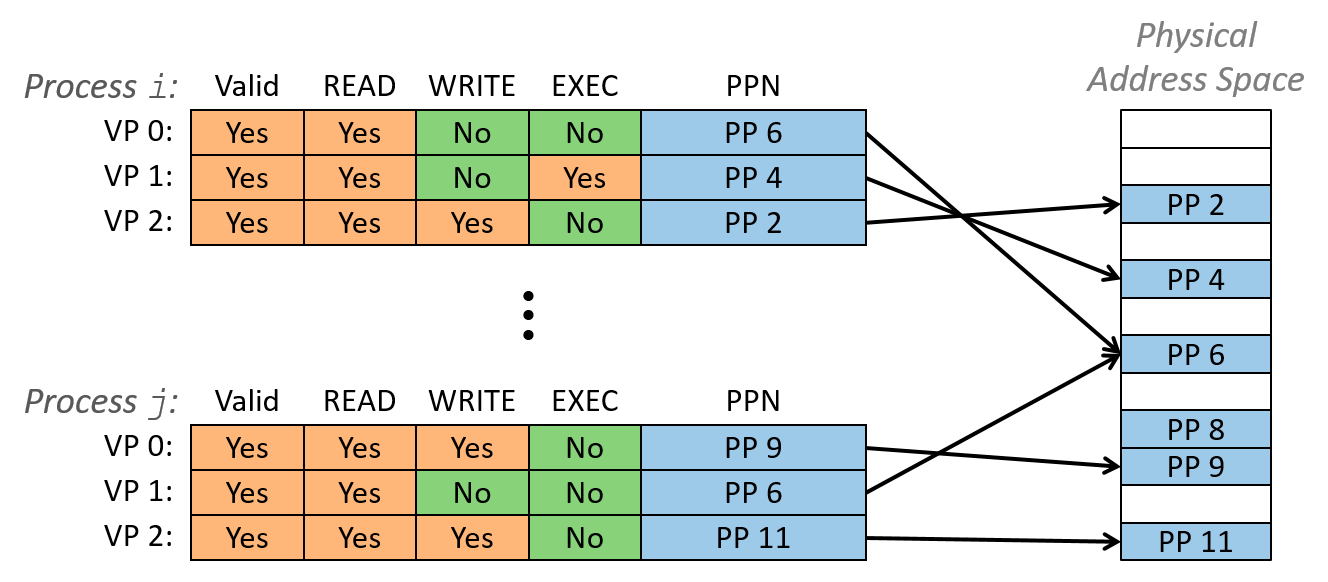
3.1 Permissions Review
| Section | Read | Write | Execute |
|---|---|---|---|
| Stack | 1 | 1 | 0 |
| Heap | 1 | 1 | 0 |
| Static Data | 1 | 1 | 0 |
| Literals | 1 | 0 | 0 |
| Instructions | 1 | 0 | 1 |
4 Improving Performance
4.1 Translation Lookaside Buffer (TLB)
- MMU has to access memory twice: once to get the PTE, and again for the actual memory request
- we can speed up address translation via a small cache of page table entries (called a translation lookaside buffer (TLB)
- VPN split into tag and index for this cache
- modern Intel processors have 128 or 256 entries in TLB
- we can speed up address translation via a small cache of page table entries (called a translation lookaside buffer (TLB)

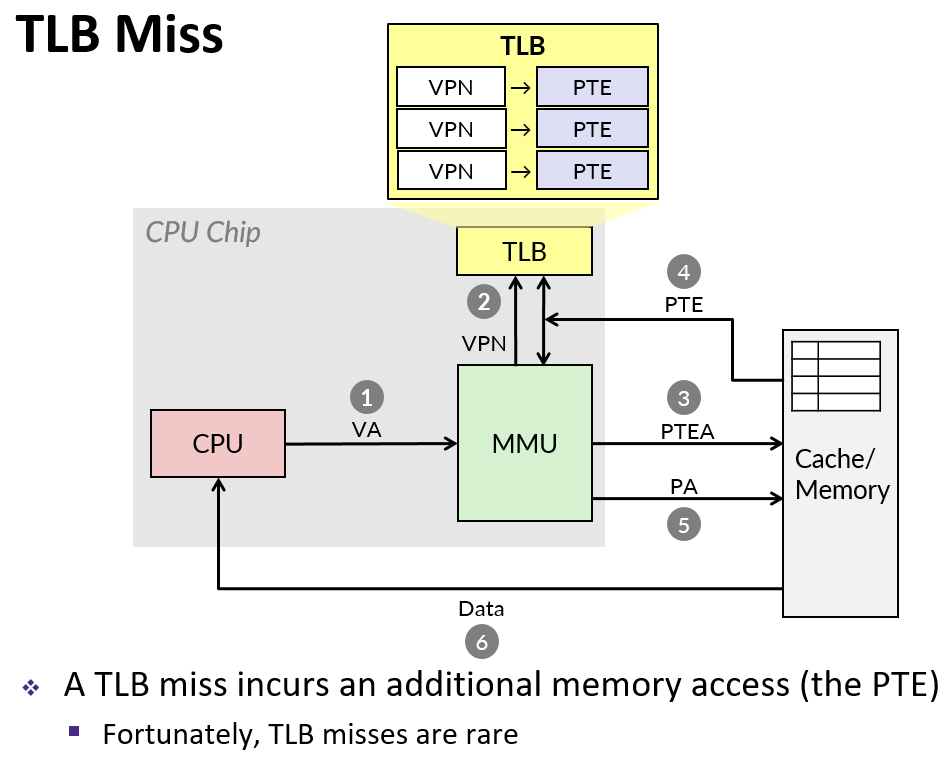
4.2 Bringing It All Together
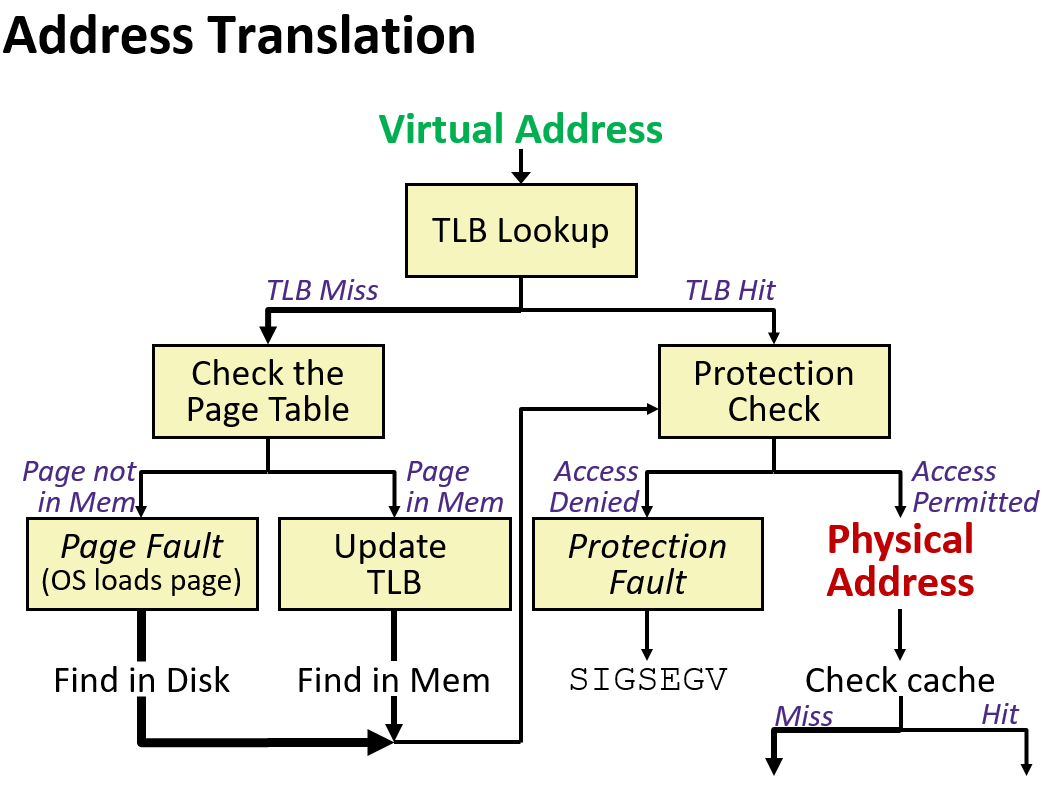

- Basic Parameters
- \(N=2^n\) — Number of addresses in virtual address space
- \(M=2^m\) — Number of addresses in physical address space
- \(P=2^p\) — Page size (bytes)
- Components of the virtual address (VA)
- VPO — Virtual page offset
- VPN — Virtual page number
- TLBI — TLB index
- TLBT — TLB tag
- Components of the physical address (PA)
- PPO — Physical page offset (same as VPO)
- PPN — Physical page number
4.3 Multi-Level Page Tables
- suppose 64-bit virtual addresses (\(n=64\)), 8 KB pages (\(p=13\)), 8 GB physical memory (\(m=33\))
- how many page table entries? 2n-p = 251
- how many bits per PTE? PPN width + management bits = \(m - p + 5\) (valid, dirty, read, write, execute) = 25 bits or about 3 bytes
- we can't actually have 4 million GB worth of page table entries for each process
- we can use multi-level page tables to reduce memory overhead
- VPN split into \(k\) segments, one for each level of page table
- instead of a million page table entries in memory, most unused, we have have a level 1 table with 1000 entries, and then only have a second level of 1000 for allocated level 1 entries
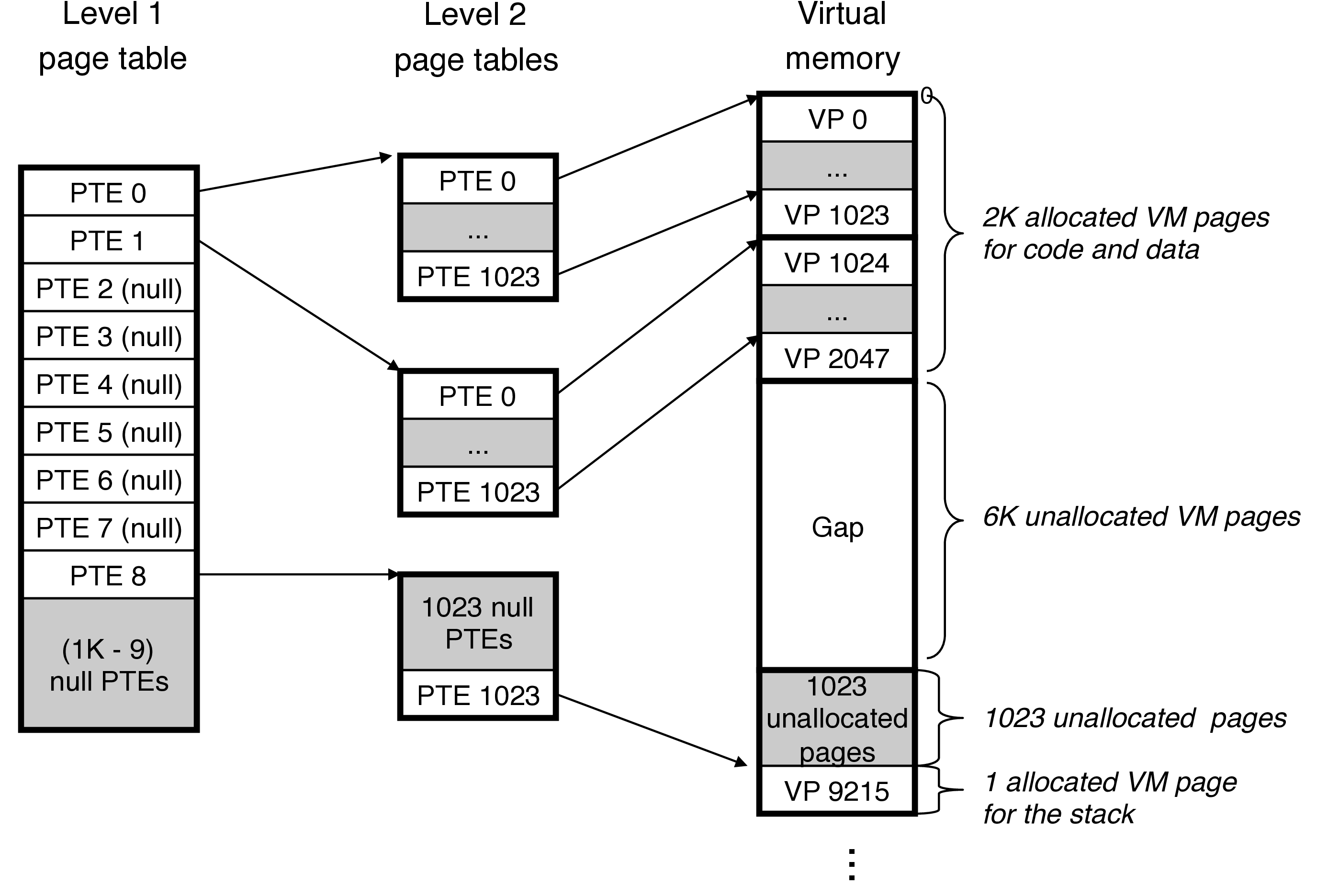
Footnotes:
1

- processor sends virtual address to MMU
- MMU requests page table entry (PTE) from page table in cache/memory
- using page table base register (PTBR) to find beginning of page table for current process
- PTE sent to MMU
- MMU send physical address to cache/memory requesting data
- cache/memory sends data to processor
2
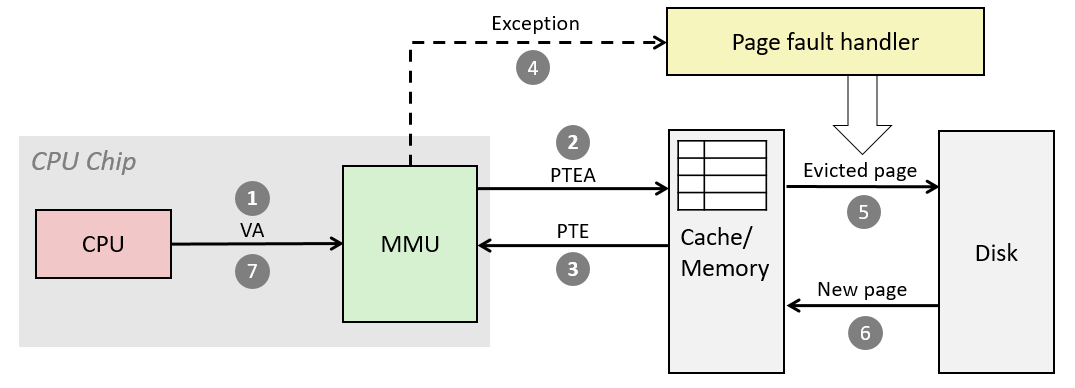
- processor sends virtual address to MMU
- MMU requests page table entry (PTE) from page table in cache/memory
- PTE sent to MMU
- valid bit is zero, MMU triggers page fault exception
- page fault handler (an operating system function) identifies page to evict
- if modified (dirty) write out (page out) to disk
- handler loads (pages in) new page, updates PTE in memory
- handler returns to original process, restarting faulting instruction